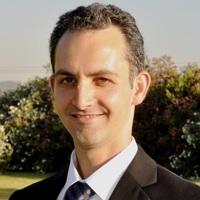moshe piamenta
David Yellin College of Education, Arts, Faculty Member
This article is an archaeo-musicological study of the trumpets (ḥaṣoṣrot, metal wind instruments) and shofarot (animal horns) in the War Scroll from the Dead Sea Scrolls of Qumran. The study of ancient Jewish music is largely uncharted... more
This article is an archaeo-musicological study of the trumpets (ḥaṣoṣrot, metal wind instruments) and shofarot (animal horns) in the War Scroll from the Dead Sea Scrolls of Qumran. The study of ancient Jewish music is largely uncharted territory. Many musical terms that appear in the Bible, Second Temple writings, and rabbinic literature, including the names of musical instruments, are not fully understood and there are many questions about their interpretation. For this reason, the War Scroll is one of the most important sources for archaeo-musicological scholarship of the ancient world generally, and of the Second Temple period in particular. This is not only because of the extensive description of the use of trumpets and shofarot in warfare that is found in the scroll, but especially because this rare and rich description is unmatched in any ancient work, Jewish, Hellenistic, or Roman. This uniquely extensive description includes a detailed itemization of the stages when the priests use different types of trumpets to direct the fighting forces, and describes the sounding of the shofarot by the Levites and the people as a means of instilling fear in the enemy. In addition, the scroll lists the types of sounds generated by trumpets and shofarot in battle, using technical and musical terms whose meaning is not always clear.
In this article, I re-examine the interpretations that previous scholars have suggested for the terms describing the sounds made by the trumpets and shofarot in the War Scroll, and, in some cases, I offer new interpretations. I also examine how trumpets and shofarot were used in specific stages of the eschatological war depicted in the scroll and suggest a number of ways to understand the military uses and purpose of the incorporation of these instruments. In addition to contributing to the understanding of the musical terms that appear in the War Scroll, my research opens a window to the rich musical language used by the Dead Sea sect and perhaps also by other groups in the Second Temple era.
In this article, I re-examine the interpretations that previous scholars have suggested for the terms describing the sounds made by the trumpets and shofarot in the War Scroll, and, in some cases, I offer new interpretations. I also examine how trumpets and shofarot were used in specific stages of the eschatological war depicted in the scroll and suggest a number of ways to understand the military uses and purpose of the incorporation of these instruments. In addition to contributing to the understanding of the musical terms that appear in the War Scroll, my research opens a window to the rich musical language used by the Dead Sea sect and perhaps also by other groups in the Second Temple era.
